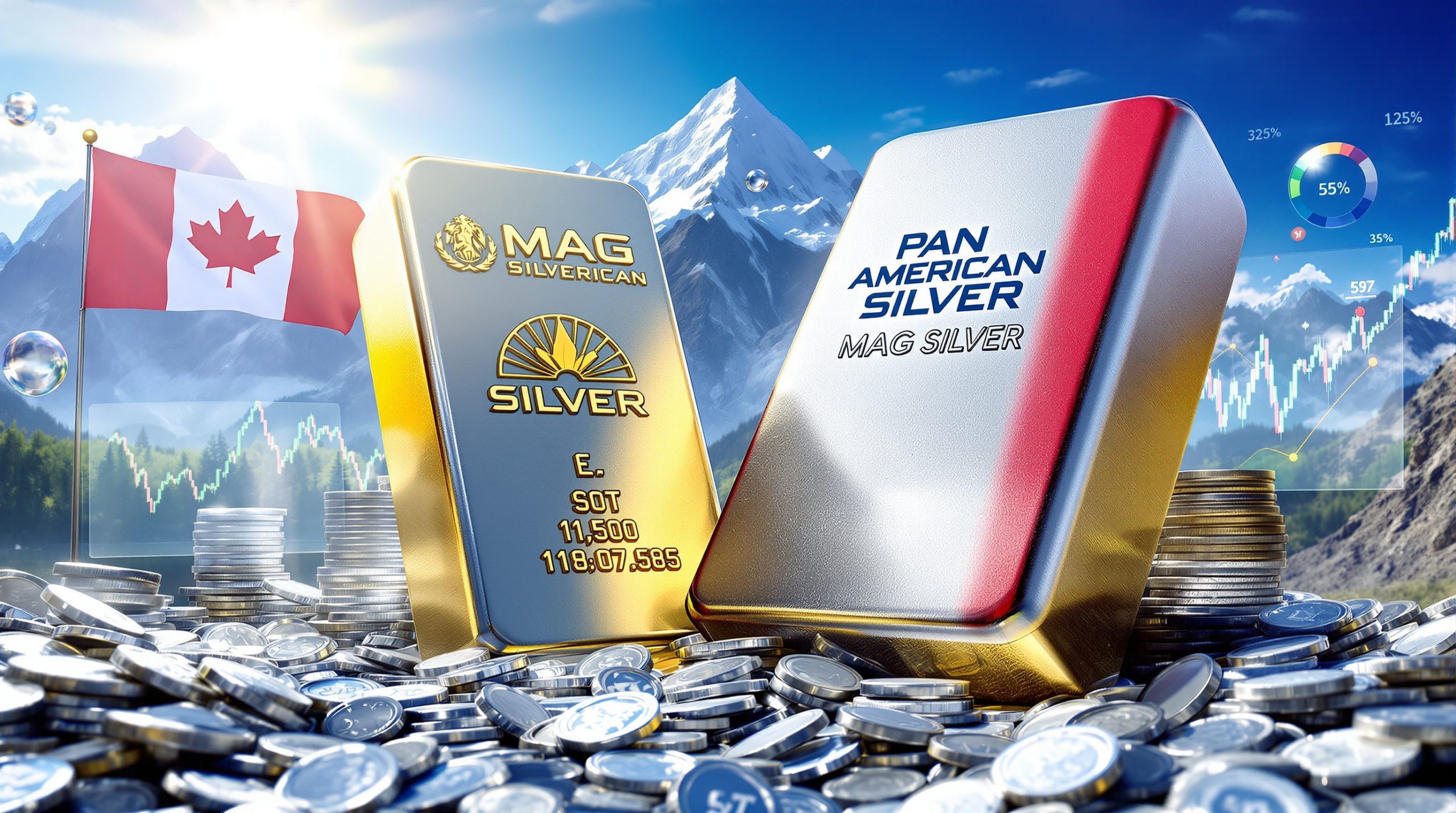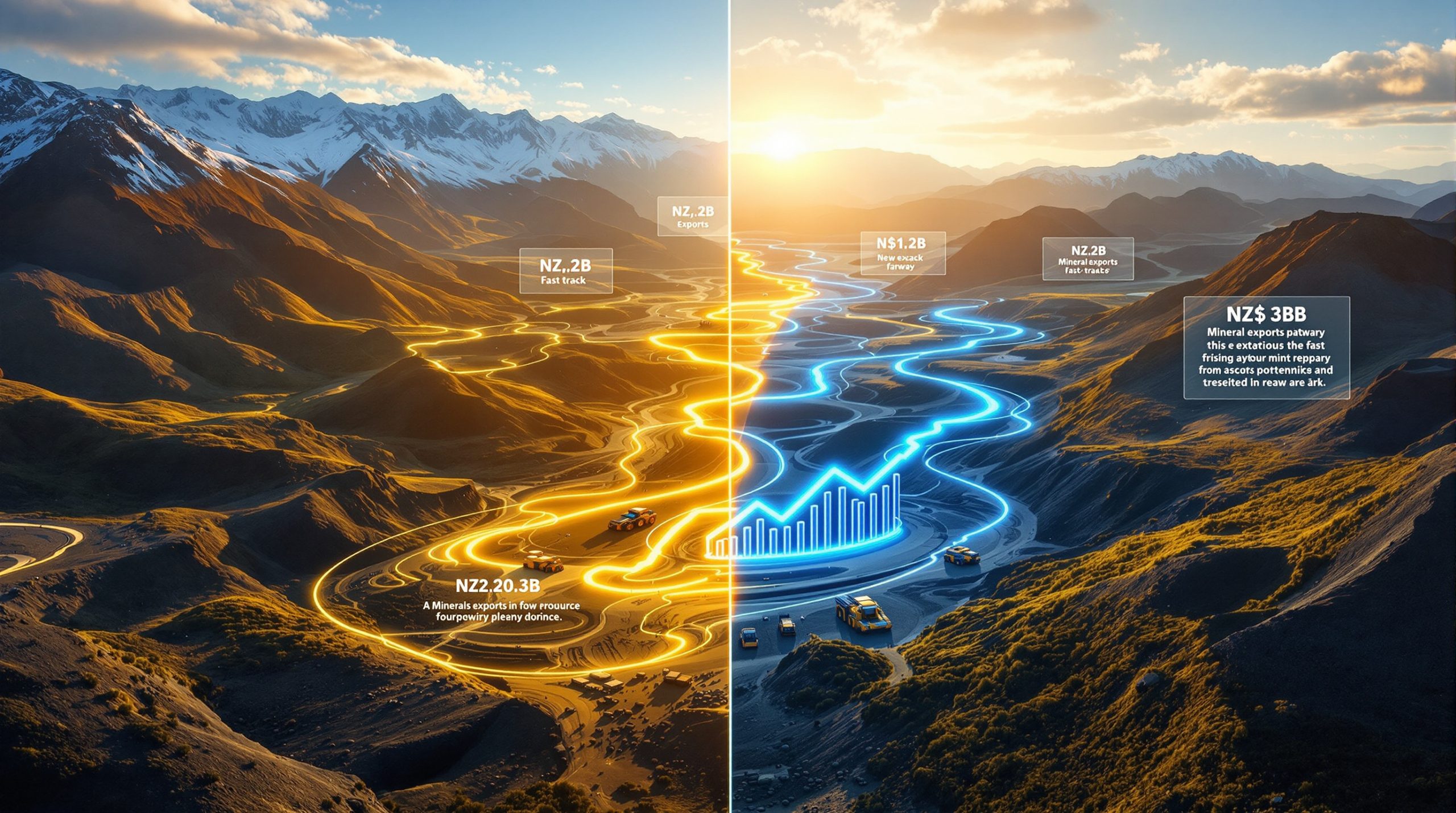How Has the Decline in Iron Ore Prices Affected Fortescue's Business Strategy?
The recent iron ore market downturn has created significant challenges for major mining companies, with Fortescue Metals Group feeling substantial pressure on its core business. According to Dino Otranto, Fortescue's CEO for Metals and Operations, the deterioration in iron ore price trends has materially impacted the company's financial performance in fiscal year 2025.
Iron ore prices have fallen approximately 23% since the beginning of 2025, with prices hovering around $90-95 per tonne compared to the $120+ levels seen in late 2024. This decline has directly affected Fortescue's revenue streams, prompting a strategic pivot that balances maintaining operational efficiency in its traditional mining business while accelerating investments in future-facing commodities.
The company has responded by implementing a dual-focused approach: enhancing productivity across existing operations while simultaneously investing in its green metals division. This strategic balancing act aims to navigate short-term market volatility while positioning for long-term growth in emerging markets.
What Factors Are Driving the Current Iron Ore Price Volatility?
Global Economic Indicators
China's property sector contraction represents the most significant headwind for iron ore demand. With Chinese construction accounting for approximately 35% of global iron ore consumption, the ongoing property market challenges have created persistent downward pressure on prices. Recent data shows Chinese property investments declining by 9.3% year-over-year, further exacerbating demand concerns.
The post-pandemic economic recovery has varied significantly across regions, creating uneven demand patterns. While Western economies have shown resilience, China's slower-than-expected rebound has maintained pressure on commodity markets that rely heavily on Chinese consumption.
Macroeconomic policy shifts, particularly China's pivot from property-driven growth to consumer-oriented development, have fundamentally altered demand patterns. This structural change suggests that iron ore demand insights may not return to previous peak levels in the near term.
Supply chain disruptions continue to create market imbalances, with shipping bottlenecks and logistical challenges affecting delivery timelines and creating periodic price volatility despite overall bearish sentiment.
Supply-Side Dynamics
Major iron ore producers have largely maintained high output levels despite price pressures, creating a market oversupply situation. The four largest producers—Rio Tinto, BHP, Vale, and Fortescue—have collectively increased production by approximately 2.7% in 2025 compared to the previous year.
New production capacity has come online in several regions, including expansions in Australia's Pilbara region and recovered capacity in Brazil following earlier disruptions. This added supply has entered the market during a period of weakening demand, further pressuring prices.
Industry inventory management has shifted significantly, with port stockpiles in China reaching 145 million tonnes in mid-2025, representing an increase of approximately 15% year-over-year. These elevated inventory levels indicate persistent oversupply conditions.
Shipping and logistics constraints, including higher freight rates due to Red Sea security concerns, have added approximately $5-7 per tonne to delivery costs for Australian producers shipping to Asian markets, creating additional margin pressure.
How Has Fortescue's Financial Performance Reflected Market Conditions?
FY25 Results Analysis
Fortescue's FY25 financial results reveal significant impacts from deteriorating iron ore prices. Revenue declined by approximately 17% compared to FY24, primarily attributed to lower realized prices for iron ore shipments. The average realized price for the period was approximately $92 per dry metric tonne, compared to $108 in the previous fiscal year.
Production volumes have remained relatively stable despite market headwinds, with Fortescue shipping 187 million tonnes of iron ore in FY25, representing a modest 1.2% decrease from the previous year. This production stability highlights the company's commitment to maintaining market share despite price pressures.
Cost management initiatives have become increasingly crucial, with Fortescue implementing efficiency programs targeting a 5-7% reduction in C1 costs. These efforts have partially offset price impacts, though margins have still compressed considerably compared to the boom periods of 2021-2022.
The company's capital allocation priorities have shifted in response to market conditions, with increased emphasis on maintaining a strong balance sheet while continuing to fund strategic diversification initiatives. Dividend policies have been adjusted to reflect the current iron ore price environment while ensuring continued shareholder returns.
Operational Efficiency Measures
Productivity improvements have been central to Fortescue's response to price pressures. The company has implemented enhanced mining techniques and processing optimizations that have increased throughput rates by approximately 8% at key operations.
Technology implementation has accelerated, with autonomous haulage systems now covering over 85% of Fortescue's mining fleet. These systems have delivered a 15% improvement in operational efficiency and reduced fuel consumption by approximately 12% across deployed sites.
Supply chain optimization efforts have reduced logistics expenses by approximately 4.3% on a per-tonne basis, helping to partially offset market headwinds. Initiatives include enhanced port handling procedures and optimized rail scheduling.
Labor force adjustments have been strategically implemented, with a 3% reduction in contractor positions while maintaining core operational capabilities. This restructuring has been carefully balanced to ensure production capacity remains intact for when market conditions improve.
What Strategic Shifts Is Fortescue Implementing to Counter Price Pressures?
Diversification Beyond Traditional Iron Ore
Fortescue's green metals initiative has become a cornerstone of its diversification strategy. The company has established a comprehensive development timeline with commercial production targets for key green metals projects over the next 3-7 years.
Investment allocation has been recalibrated, with approximately 30% of capital expenditure now directed toward green metals and future-facing commodities. This represents a significant increase from the 15-20% allocation seen in previous years.
Technology partnerships have been accelerated to enhance capabilities in green metal production. Fortescue has established collaborative arrangements with several European and North American technology providers specializing in hydrogen electrolysis, green ammonia production, and advanced metallurgical processes.
Market positioning efforts have focused on establishing early-mover advantages in emerging resource categories. The company has secured exploration rights and processing capabilities for critical minerals strategy essential to renewable energy systems and battery technologies.
Sustainability-Focused Initiatives
Decarbonization efforts have been intensified across mining operations, with Fortescue committing to a 30% reduction in operational emissions by 2030. Implementation of solar-powered systems at remote mining sites has already reduced diesel consumption by approximately 25 million liters annually.
Renewable energy integration has progressed significantly, with solar and battery storage systems now providing approximately 15% of energy requirements at key production hubs. Plans to increase this to 40% by 2028 are underway with multiple project phases currently in development.
ESG performance metrics have been enhanced with more comprehensive reporting frameworks. The company now tracks over 30 distinct sustainability indicators and has linked executive compensation to achieving specific environmental and social governance targets.
Carbon reduction targets have been formalized with a detailed implementation roadmap. These include transitioning to a fully electric mining fleet by 2030 and achieving net-zero emissions for Scope 1 and 2 activities by 2040, with intermediate milestones established for tracking progress.
How Is Fortescue Positioning Its Green Metals Strategy?
Profitability Pathway
Fortescue has outlined a staged pathway to commercial viability for its green metal initiatives. Initial production facilities are expected to reach operational status within 3 years, with scale economies driving profitability improvements in the 5-7 year timeframe.
Capital expenditure requirements for green metal processing facilities are substantial, with approximately $3.5-4 billion allocated for the initial development phase. This investment is structured to deliver progressive capacity expansion aligned with market development and technology maturation.
Market development strategies for green premium products focus on establishing offtake agreements with industrial partners committed to decarbonization. Early engagements have secured potential markets for approximately 60% of planned initial green hydrogen and ammonia production.
Competitive positioning against established producers emphasizes Fortescue's integrated approach, combining mining expertise with renewable energy generation capabilities. This integration creates potential cost advantages of approximately 15-20% compared to standalone green metal production facilities.
Technological Innovations
Proprietary processing methods have been developed to reduce environmental impact while enhancing production efficiency. These include advanced electrochemical techniques that decrease energy requirements by approximately 20% compared to conventional processes.
Energy efficiency improvements are central to Fortescue's green metal strategy, with solar-powered hydrogen production facilities designed to achieve energy conversion rates approximately 25% higher than industry standards through innovative system architecture.
Research partnerships have been established with leading metallurgical institutes to advance processing breakthroughs. These collaborations focus on developing catalysts that can operate at lower temperatures, potentially reducing energy requirements by an additional 15-18%.
Scaling challenges are being addressed through a modular implementation approach. This strategy allows for incremental capacity expansion while incorporating technology improvements in successive deployment phases, reducing technology obsolescence risk.
What Market Challenges Must Fortescue Navigate in the Near Term?
Price Volatility Management
Hedging strategies have been selectively implemented to mitigate extreme price fluctuations. These financial instruments cover approximately 20% of production and are structured to provide downside protection while maintaining exposure to potential market improvements.
Contract structuring has evolved to balance stability and opportunity in volatile market conditions. Fortescue has increased the proportion of index-linked pricing arrangements with adjustment mechanisms that provide partial insulation from short-term price swings.
Market intelligence capabilities have been enhanced with advanced data analytics systems that process approximately 1,500 distinct market indicators daily. These systems provide early warning signals for potential price movements, allowing more responsive operational adjustments.
Scenario planning has been expanded to encompass a broader range of price environments. Operations are now structured to maintain profitability at iron ore prices as low as $70 per tonne while preserving upside potential when market conditions improve.
Competitive Landscape Evolution
Major competitors have implemented similar diversification strategies in response to market pressures. This parallel evolution has created both collaborative opportunities in technology development and competitive challenges in securing market share for new products.
Industry consolidation possibilities have increased amid challenging conditions. Fortescue has established evaluation criteria for potential acquisition targets that could accelerate its diversification strategy or enhance operational synergies.
Emerging producers, particularly in Africa and South America, have introduced new competitive dynamics to the global supply landscape. These operations typically have higher production costs but benefit from geographic proximity to certain markets and favorable regulatory environments.
Differentiation strategies have become increasingly important in a commodity-driven market. Fortescue has emphasized product quality and consistency, achieving a price premium of approximately $2-3 per tonne for higher-grade products compared to benchmark prices.
How Are Investors Responding to Fortescue's Strategic Direction?
Market Sentiment Analysis
Share price performance has reflected investor uncertainty about the iron ore forecast insights balanced against optimism regarding diversification initiatives. Fortescue stock has experienced approximately 22% higher volatility than sector benchmarks over the past 12 months.
Analyst perspectives on company strategy execution have been mixed, with approximately 60% expressing positive views on the green metals diversification while maintaining concerns about near-term earnings pressure from the core iron ore business.
Institutional investor positioning has shifted slightly toward increased holdings, with ownership concentration among long-term strategic investors increasing by approximately 4 percentage points over the past year. This suggests confidence in the company's long-term strategic direction despite short-term challenges.
Dividend policy sustainability has become a focus area for income-oriented investors. The current dividend yield of approximately 7-8% remains attractive in a global context, though questions about long-term sustainability have emerged given capital requirements for diversification initiatives.
Future Growth Expectations
Capital markets outlook for resource sector investments has improved modestly with expectations of monetary policy easing. Lower interest rate environments typically support resource company valuations by reducing discount rates applied to future cash flows.
Valuation metrics compared to historical averages show Fortescue trading at approximately 0.8x price-to-book value, representing a 15% discount to its 10-year average. This valuation reflects market uncertainty about the transition period but potentially offers value for long-term investors.
Risk assessment of strategic diversification initiatives indicates a balanced profile, with technology implementation risks offset by the potential for establishing early leadership in emerging markets. Sensitivity analysis suggests that even partial success in green metal initiatives could deliver significant shareholder value.
Long-term value creation potential extends beyond the current price cycle, with successful diversification potentially reducing earnings volatility by 30-40% over a 10-year timeframe. This structural improvement in business resilience represents a significant potential value driver for patient investors.
What Are the Long-Term Implications for Australia's Resource Sector?
National Economic Impact
Export revenue projections indicate that iron ore will remain Australia's largest export commodity by value for at least the next decade, despite price fluctuations. Annual export revenues are expected to range between AUD $80-120 billion depending on price environments.
Employment trends in resource-dependent regions show evolving skill requirements, with traditional mining roles increasingly complemented by technical positions supporting automation and renewable energy integration. This transition creates both challenges and opportunities for workforce development.
Tax contribution variations with changing profitability have significant implications for Australian fiscal planning. Each $10 per tonne change in iron ore prices impacts federal tax receipts by approximately AUD $1.2 billion annually, creating planning challenges for public sector budgeting.
Infrastructure development linked to mining activity continues to shape regional development patterns. Approximately AUD $15 billion in resource-related infrastructure investments are currently planned across Western Australia and Queensland, supporting economic activity beyond direct mining operations.
Industry Transformation Patterns
Technological adoption is accelerating across the sector, with autonomous systems now standard in new mine developments. Investment in modern mining technology has increased by approximately 35% over the past three years, significantly outpacing overall capital expenditure growth.
Sustainability requirements are fundamentally reshaping operational models. Over 80% of new mining projects now incorporate renewable energy components from initial design stages, compared to less than 30% five years ago.
Skills development needs for future mining operations increasingly focus on digital literacy, systems integration, and environmental management. Educational institutions in mining regions have experienced a 45% increase in enrollment for technology-focused programs aligned with these emerging requirements.
Policy environment evolution continues to influence investment decisions, with carbon pricing mechanisms and emissions regulations becoming increasingly important considerations. Regulatory certainty has emerged as a key factor in capital allocation decisions for long-life mining assets.
FAQ: Fortescue and Iron Ore Market Dynamics
How significant is China's property sector to iron ore demand?
China's property and construction sectors account for approximately 35% of global iron ore consumption. The ongoing contraction in Chinese property investment, which declined 9.3% year-over-year in the most recent quarter, has created persistent downward pressure on iron ore demand. Industry analysts estimate that each 5% change in Chinese construction activity translates to approximately 40-50 million tonnes of annual iron ore demand.
What production cost advantages does Fortescue maintain?
Fortescue maintains competitive production costs through integrated supply chain management, operational scale, and technological implementation. The company's C1 costs average approximately $18-20 per wet metric tonne, positioning it in the first quartile of the global cost curve. This cost position provides significant operational flexibility even during price downturns, with breakeven prices estimated at approximately $45-50 per tonne including sustaining capital and corporate overheads.
How does currency exchange impact Fortescue's financial performance?
As an Australian producer selling in US dollars while incurring costs primarily in Australian dollars, currency fluctuations significantly impact margins. Each $0.01 movement in the AUD/USD exchange rate affects Fortescue's EBITDA by approximately $100 million annually. A weaker Australian dollar effectively lowers production costs when translated to USD, providing a natural partial hedge against iron ore price declines.
What timeline has Fortescue established for green metals profitability?
Fortescue has outlined a multi-phase approach to green metals development with initial commercial production facilities expected to be operational within 3 years. Scale economies driving improved unit economics are anticipated in the 5-7 year timeframe, with full commercial profitability expected as green premium markets mature and technology costs decline. This timeline is aligned with projected global demand growth for green metals, particularly hydrogen and its derivatives, which is expected to increase ten-fold by 2035.
Want to Invest in the Next Major Mineral Discovery?
Discover why significant ASX mining discoveries can generate substantial returns by exploring the historic examples on Discovery Alert's dedicated discoveries page, where their proprietary Discovery IQ model transforms complex data into actionable investment insights that position you ahead of the market.




